History of Miyagawa Morning Market
Miyagawa Morning Market started to develop in the Edo period. It initially sold rice, silk and flowers. Since the Meiji period, the local farmers began to gather around the market and sell their products.
Preserved food to survive harsh winter
Takayama is nestled deep in the mountains surrounded by the high peaks of the Northern Japan Alps, and is subject to severe cold and snow in winter.It was very difficult for the townspeople to travel even to nearby crop field to get fresh vegetables and other supplies. Therefore, various kinds of preserved food has been invented and handed down to survive such harsh winter.
Takayama has been a transportation hub which connects Hokuriku region and Nagoya metropolitan area. That also helped Takayama to develop their morning markets.
Declining phase of Miyagawa Morning Market
The market went into the declining phase as World War 2 took place. All Japanese citizens came to suffer from the food shortage because of the excessive demands and govermental regulations. After the war, there was a shortage of food and supplies, so black markets opened all over the country.
Takayama was no exception with black markets held in front of Takayama Jinya, Takayama Betsuin, and Miyagawa river area. As Japan’s economy skyrocketed thanks to Tokyo Olympics and Osaka World Expo, Miyagawa Markets also gained its vitality and grew to its current size.
Red turnip pickles
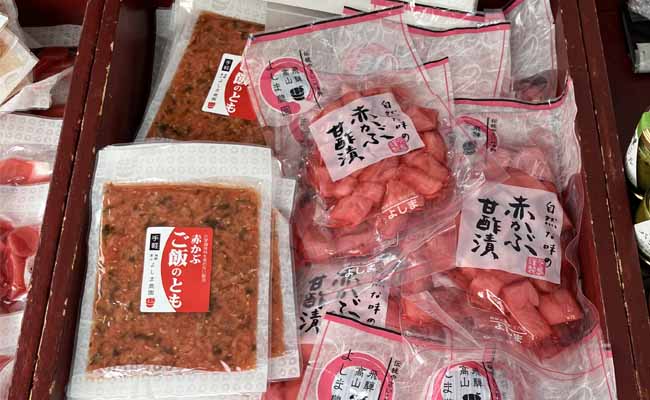
Preserved food like pickles are very important in such a cold region as Takayama where people have to bare harsh winter. There are many kinds of pickles offered at the market. Above all, the pickled red turnip should be the best recommendation in Takayama.
Hoba miso

Source: https://www.asaichi.net/index.html
Hoba miso is one of the local dishes from the Takayama region. It is made by mixing miso with ingredients such as green onions and ginger, and shiitake mushrooms, and grilling it on magnolia leaves. The name Hoba Miso comes from the fact that miso is placed on magnolia leaves and then grilled.
Midarashi dumplings
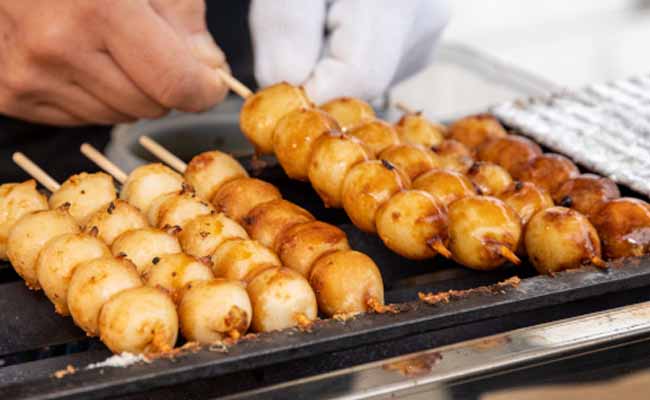
Source: https://www.asaichi.net/index.html
Midarashi dumplings are also local food in the Takayama region. It is considered more like a type of preserved food than a type of sweets. They are round-shaped and flavoured with soy sauce. It has chewy texture with faintly smoky aroma which reminds us of soothy rustic atmosphere.
Gohei mochi rice cake
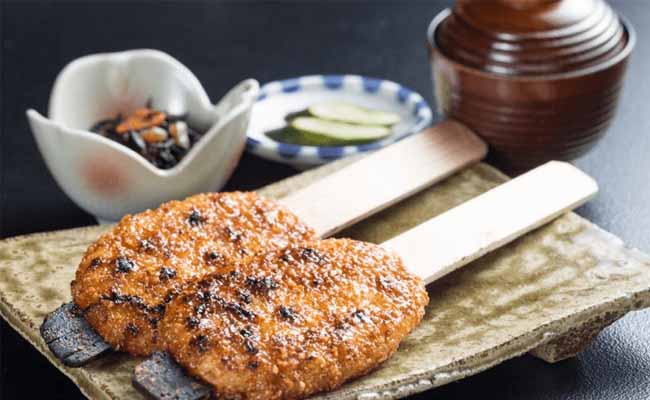
Goheimochi is a type of mochi that has been passed down in the mountainous area of the Chubu region such as Gifu, Toyama, Aichi and Shizuoka. Uruchimai rice that has been half-pounded until grains remain, is dipped in sauce and grilled on skewers. What’s interesting is the sauce differs in each region.
Owara tamaten
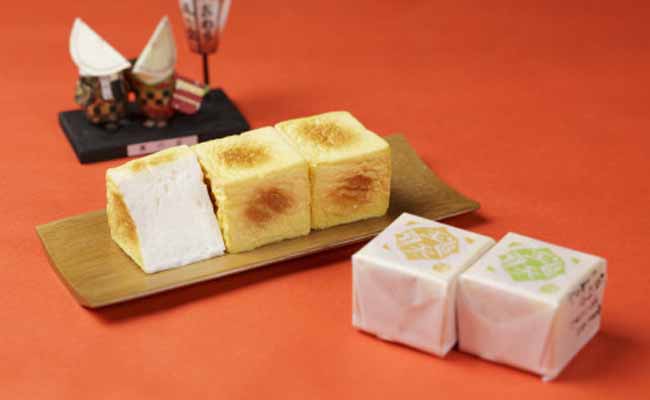
Owara tamaten is a square shaped traditional sweet which was invented by a long-established store called Rinseido. It is made by wrapping a sweet egg white hardened with agar in a yolk and baking it to a golden color. It looks like a browned omlet or French toast.
Sarubobo
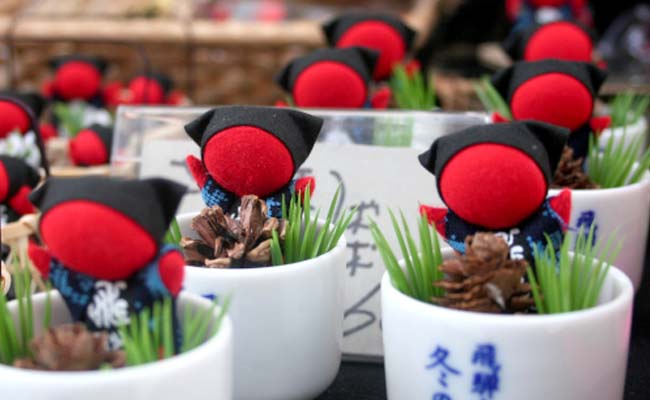
Source: https://www.asaichi.net/index.html
In Hida dialect, a baby is called “bobo” and saru translates as monkey. So sarubobo means baby monkey. They can often be seen at tourist spots in the Hida region. Tracing the origin of this sarubobo, it is said that its original form was made of pure silk first became popular among the aristocrats of the time as amulets for birthing houses.
Kindness of local people

Source: https://www.asaichi.net/index.html
Every time you stop by a food stall at Miyagawa Morning Market, you’ll be greeted with smiling faces and gentle Hida dialect. Every time you buy vegetables or pickles, they give you a little extra, and if you become a regular customer, they greet you in a friendly manner.